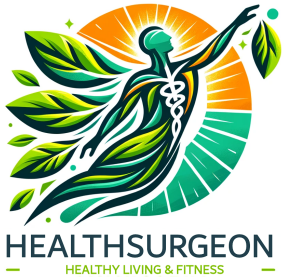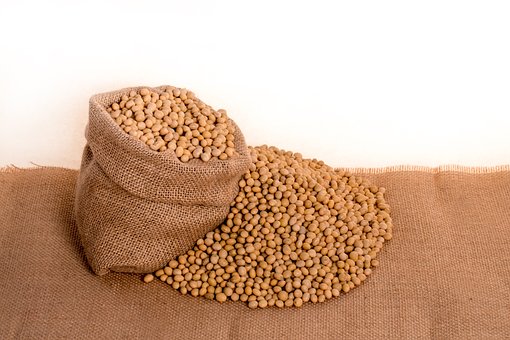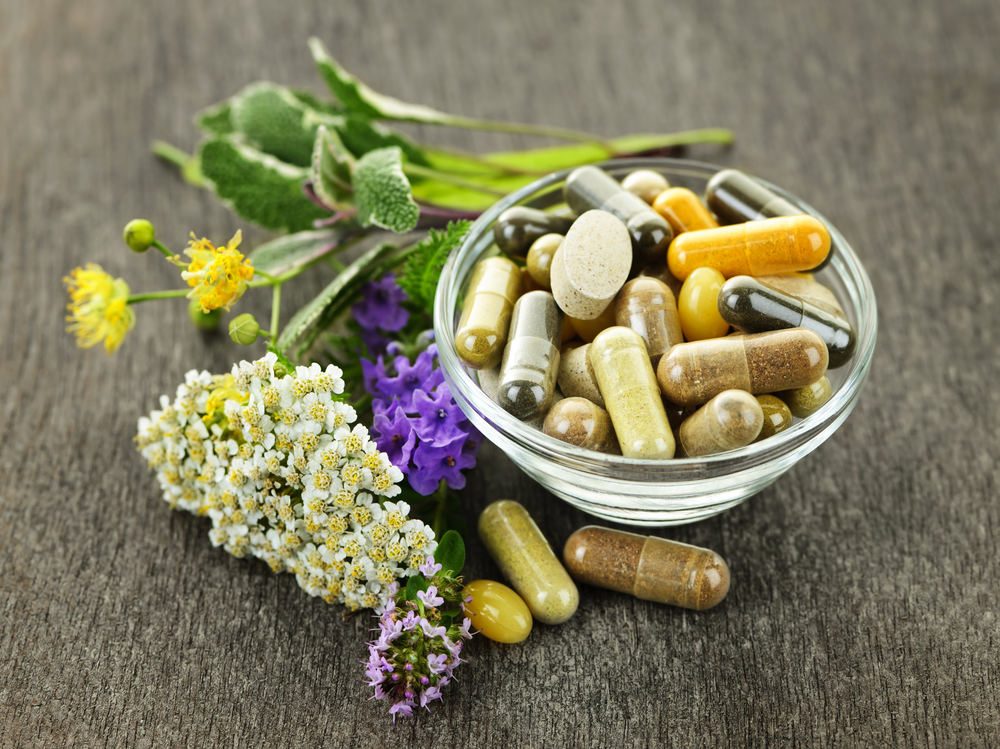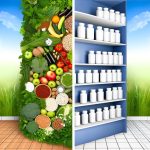Soy is a popular legume of Asian origin. Some vegetarians may use soy to replace meat in their diets. However, some people are hesitant to consume soy because of the controversy surrounding the benefits and risks of consuming it. This is because some producers now genetically modify the plant.
Soybeans are nutritious and rich in protein, making them ideal for many food uses. People can eat them, drink them, or take them in supplement form.
The oil in soybeans can be used to make fuel, candles, crayons, and engine lubricants. The article discusses soy, its potential health benefits and risks, and the best forms of soy to consume.
Soy Products
Soybeans can be consumed in many ways.
There are two types of soybean-based foods: fermented and unfermented. Unfermented foods made from soy include tofu, soymilk, edamame, and soy nuts, while fermented soy products include miso, tempeh, natto, and soy sauce.
Some soy products contain calcium and iron, such as tofu or tempeh (made with a calcium coagulant) and calcium-fortified soy drinks.
Second Generation Soy Products
There is another type of soy-based food that we call ‘second generation’ soy food in Australia. These are all foods that can be made with tofu, soy bread, soy pasta, and soymilk.
This also includes products that have soy or soy-based ingredients, such as lecithin (additive 322), which can often be found in chocolate or baked goods.
Soybeans and Phytoestrogens
The hormones found in soybeans, called phytoestrogens, are naturally occurring chemicals that are found in plants. Given the right conditions, these compounds copy the action of the female hormone estrogen but are much less potent – occurring at a frequency of 1/1000. Isoflavones are one example of phytoestrogens. Isoflavones have potent antioxidant effects and can also replicate the activity of estrogen. However, scientists are still working to understand all of the ways these molecules influence human physiology. Isoflavones are commonly found in soybeans. The amount of isoflavones in soy food varies depending on the type of soy food, how it is prepared, and the brand. Soy flour and soy nuts are two of the richest sources of isoflavones.
Types and Uses
Soybeans are a protein-rich plant food that can be used in a variety of recipes. They belong to the pea family. Soybeans come in many colors, including:
Green soybeans – Young green soybeans are also called edamame. You can steam them and eat them whole as an appetizer. Edamame that has been removed from its shell is also a common ingredient in salads, stir-fries, and soup.
Yellow soybeans – Yellow soybeans are generally used to make soy milk, tofu, tempeh, and tamari. The beans are also used to produce soy flour, which is used in baking.
Black soybeans – In some Asian cuisines, black soybeans are used in dishes that are simmered or fermented.
Soy milk and cheese can be used as substitutes for dairy products. Soybeans also produce soy oil, which can be used for cooking or as an ingredient. Soybeans that have had the oil removed can be used as food for farm animals and pets.
Some manufacturers create protein powder and isoflavone supplements from soybeans. Isoflavones are a type of phytoestrogen, which are plant compounds that have a similar structure to estrogen.
Less processed organic soy is the most healthful option. Some examples include:
- cooked soybeans
- edamame
- soy milk
- tofu
- tempeh
- soy nuts
Nutrition
Soy is a complete protein. This means that the product contains all nine essential amino acids. It is an important source of protein for many people, especially those who don’t eat meat.
According to the United States Department of Agriculture (USDA), 100 grams (g) of cooked green soybeans without salt contains:
- 141 kilocalories
- 12.35 g of protein
- 6.4 g of fat
- 11.05 g of carbohydrate
- 4.2 g of fiber
Soybeans are a good source of protein, vitamin C, and folate. They are low in saturated fat. They are also a good source of:
The nutritional content of soy products can vary depending on the manufacturing process and added ingredients.
Health Benefits of Soy
Some research suggests that including soy in the diet has several potential health benefits. We cover these in more detail below.
Soybeans may help improve cholesterol levels, which can reduce the risk of developing heart disease.
Some studies found that soy had little to no effect on people’s cholesterol levels. While other studies show consuming soy can help reduce levels of total cholesterol, triglycerides, and low density lipoprotein (LDL) cholesterol in the arteries.
LDL cholesterol is commonly referred to as “bad cholesterol” because it has the potential to contribute to the development of clogged arteries.
Soy intake significantly increased the amount of high density lipoprotein cholesterol. HDL cholesterol is known as “good cholesterol” because it helps remove LDL cholesterol from arteries.
The people with higher cholesterol saw greater decreases in their LDL cholesterol than those with normal levels. Also, soy foods that are less processed – including soy milk, soybeans, and soy nuts – were more effective than soy protein extracts or supplements.
1. Managing Obesity
Rats who were given soy isoflavone supplements gained less weight than rats who were not given the supplements. The study found that compounds in soy isoflavones prevented the accumulation of fat around the rodents’ organs.
The study suggests that taking soy isoflavones could help with weight management.
2. Reducing Breast Cancer Risk
A review of studies in 2019 found that isoflavones in soy can help lower the risk of certain types of cancer, including prostate cancer and some breast cancers.
Studies included in the review found that Asian women who consumed soy isoflavones had a reduced risk of cancer both before and after menopause. Soy isoflavones may help reduce the growth and spread of cancers associated with hormones.
Although the American Cancer Society is not certain if processed soy products have the same cancer-preventing benefits as whole soy foods, they still suggest that consuming soy is beneficial.
Proteins that have been isolated from soybeans by manufacturers. The fat is removed from soybean products to create textured vegetable protein.
3. Reducing the Risk of Type 2 Diabetes
Soy isoflavones may reduce the risk of diabetes, though the mechanism through which they may achieve this is still unknown, according to a 2019 review of studies.
In type 2 diabetes, the body’s cells absorb less sugar from the bloodstream, which causes it to circulate and cause harm. Insulin is a hormone that regulates blood sugar levels by allowing glucose to enter cells, where it is converted into energy.
A study found that soy isoflavones may increase insulin sensitivity, allowing cells to better respond to insulin and absorb more glucose.
4. Soybeans and Menopause
It is thought that soy can reduce menopausal symptoms such as hot flashes because it contains phytoestrogens. This is based on observations of women in some parts of Asia, who tend to have soy-rich diets and typically fewer hot flashes during menopause than women on meat-rich diets. These observations suggest that soy intake may reduce hot flashes during menopause.
The phytoestrogens in soy may help to alleviate some of the symptoms associated with menopause, in a way that is similar to hormone replacement therapy (HRT). Although soy consumption has health benefits, it would take almost a year of regular consumption to have benefits similar to those of traditional hormone replacement therapy.
Further research is needed to confirm soybeans’ effectiveness in managing menopausal hot flashes, but there is evidence that it may help relieve symptoms to some degree. You should not take soy supplements that have been highly processed if you are at a high risk for breast cancer or if you are a breast cancer survivor. Eating soy foods in moderation is a healthy behavior.
Amount of Soy for Health Benefits
You only need around 30 to 50mg of isoflavones to get health benefits. Examples of the average isoflavone content of some foods include:
- half a cup of soybeans – 40 to 75mg isoflavones
- quarter cup of soy flour – 45 to 69mg isoflavones
- one 250ml glass of soy drink – 15 to 60mg isoflavones
- one 115g block of tofu – 13 to 43mg isoflavones
- one 110g block of tempeh – 41mg isoflavones
- one container of soy yoghurt – 26mg isoflavones
- two slices of soy bread – 7 to 15mg isoflavones
- teaspoon of soy sauce – 0.4 to 2.2mg isoflavones.
Traditional soy foods, such as tofu, tempeh, and soymilk, are generally healthier than ‘second generation’ soy foods, such as soy burgers and soy cheese. Make sure to check the food labels on soy products, as many of them are high in salt and not good for our health.
Tips for Increasing Soy Intake
If you want to increase your intake of soy:
- Choose whole soy foods like soymilk, tempeh, soy bread and tofu.
- Check ingredient lists to make sure the soy foods you buy are made from whole soybeans and not soy isolates.
- Make sure products (such as cereals) contain soy protein and not just added isoflavone.
Other Foods Containing Phytoestrogens
Foods other than soy that contain phytoestrogens include:
- wholegrain cereals – like oats, wheat, corn, barley, rye and buckwheat
- nuts and seeds – such as almonds, linseed, flaxseed, sunflower, pumpkin and sesame
- sprouts – alfalfa
- oils – extra virgin olive oil
- other legumes – chickpeas, lentils and kidney beans.
Treating Osteoporosis
Isoflavones from soy may be just as effective as hormone replacement therapy for osteoporosis in women. Osteogenesis imperfecta is a disorder that results in fragile bones that break easily.
One of the possible causes of osteoporosis in women is estrogen deficiency. HRT aims to replace this estrogen in the body. The drug can have severe side effects, including increasing the risk of stroke, breast cancer, and coronary heart disease.
A number of studies mentioned in this review imply that soy isoflavones are just as good as hormone replacement therapy when it comes to increasing bone density.









